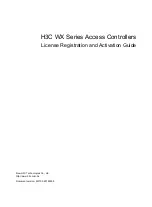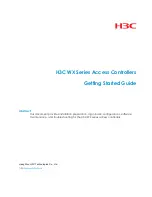
CHAPTER 5 EEPROM (DATA MEMORY)
User’s Manual U14826EJ5V0UD
62
(6) Do not execute the following operations while writing to EEPROM, as execution will cause the EEPROM cell
value at that address to become undefined.
• Turn off the power
• Execute a reset
• Clear ERE10 to 0
• Clear EWE10 to 0
• Switch the EEPROM timer count clock
(7) Do not execute the following operation while writing to EEPROM after selecting system clock division for the
EEPROM timer count clock, as execution will cause the EEPROM cell value at that address to become
undefined.
• Execute a STOP instruction
(8) Do not execute the following operations while writing to EEPROM after selecting 8-bit timer 40 output for the
EEPROM timer count clock, as execution will cause the EEPROM cell value at that address to become
undefined.
• Execute a STOP instruction
• Set 8-bit timer 40 operation mode to other than “discrete mode”
• Stop 8-bit timer 40 operation
(9)
Do not execute the following operations while writing to or reading from EEPROM, as execution will cause the
EEPROM data read next to become undefined, and a CPU inadvertent program loop could result.
• Clear ERE10 to 0
• Execute a write to EEPROM
(10) When not writing to or reading from EEPROM, it is possible to enter low-power consumption mode by clearing
ERE10 to 0. In the ERE10 = 1 state, a current of about 0.27 mA (V
DD
= 3.6 V) is always flowing. If an
instruction to read from EEPROM is then executed, a further 0.9 mA current will flow, increasing the total
current flow at this time to approximately 1.17 mA (V
DD
= 3.6 V).
In the ERE10 = 1, EWE10 = 1 state, a current of about 0.3 mA (V
DD
= 3.6 V) is always flowing. If an instruction
to write to EEPROM is then executed, a further 0.7 mA current will flow, and if an instruction to read from
EEPROM is executed, a further 0.9 mA current will flow, increasing the total current flow at this time to
approximately 1.0 mA (V
DD
= 3.6 V) for the former case and 1.2 mA (V
DD
= 3.6 V) for the latter.
(11) Execution of a STOP instruction causes an automatic change to low-power consumption mode, regardless of
the ERE10 and EWE10 settings. The states of ERE10 and EWE10 at the time are maintained. During the
wait time following STOP mode release, a current of approximately 300
µ
A (V
DD
= 3.6 V) flows.
Executing a HALT instruction does not change the mode to low-power consumption mode.
















































